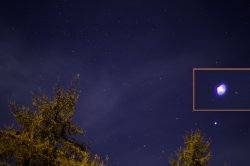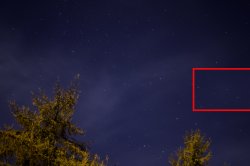Hey, I shot this a few weeks ago in the Lake district and wondered what it is. I took 3 or 4 shots, all 8 second exposure, ISO 400 and at 50mm, F1.8. Its the bright star below the zoomed in bordered bit.
All the shots I took had this same star appearing like in the attached shot. At first I thought I might have knocked the camera but for it to be the same in each shot it doesn't make sense.
I believe it was facing south but can not be certain, kinda get lost in the forest!
Processed in LR4.2, exported and the little zoomed in thing via photoshop 6
Any suggestions are welcome
All the shots I took had this same star appearing like in the attached shot. At first I thought I might have knocked the camera but for it to be the same in each shot it doesn't make sense.
I believe it was facing south but can not be certain, kinda get lost in the forest!
Processed in LR4.2, exported and the little zoomed in thing via photoshop 6
Any suggestions are welcome



